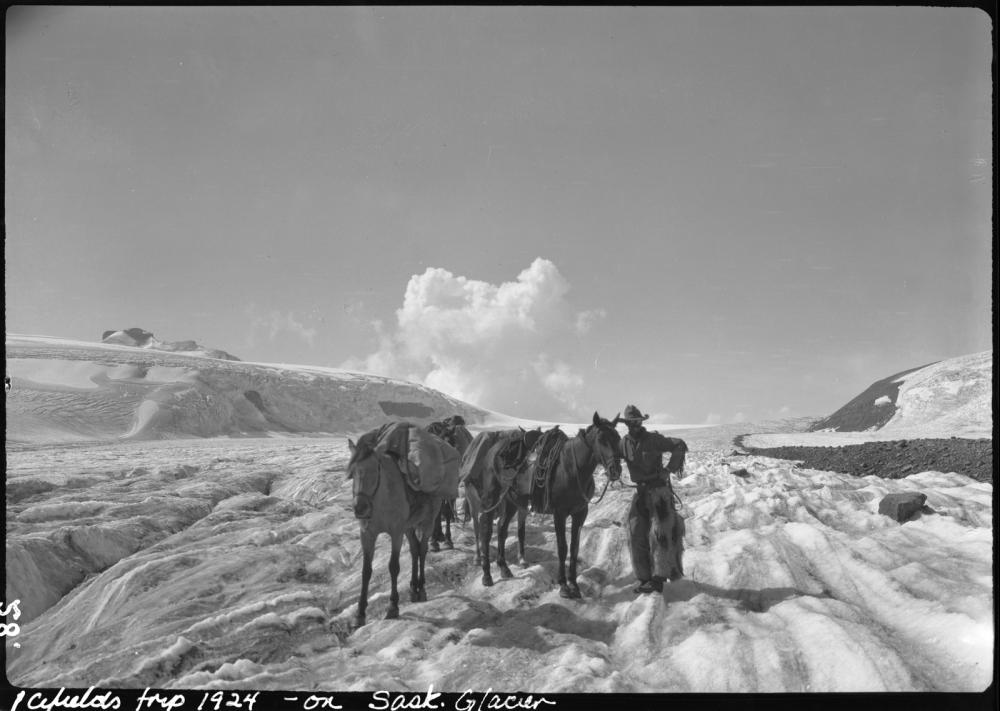When photographer Byron Harmon planned his trip to the Canadian Rockies in 1924, he brought more than just his camera equipment. “He organized a trip with three guides, 16 pack horses, a couple of dogs and a cage of passenger pigeons to carry messages,” says Mary-Beth Laviolette, co-curator of the exhibit featuring Harmon’s work from the trip. Titled High Adventure: Byron Harmon on the Columbia Icefield, 1924, the exhibit will be one of two at the Art Gallery of Alberta showcasing prominent works from the same year the gallery opened.
The AGA was founded August 18, 1924, but was called the Edmonton Museum of Art at the time of its opening. It initially had no permanent space, so the first exhibit was held at the Fairmont Hotel Macdonald. During its 90 years, it changed names and locations several times, but eventually found a home across from Sir Winston Churchill Square.
The exhibit features an 11-minute film, We Nearly Killed Ourselves, 36 large-scale black and white photographs and one original, hand-colour print by the artist. Harmon, who was Banff’s first professional photographer, spent much of his career capturing images of Banff National Park and other parks in the area. “He left such a huge legacy in terms of photography,” says Laviolette. “We decided to focus on this 1924 trip he took. It was 70 days and they covered about 800 kilometres. At that time, there was only one road in Banff National Park that went to Lake Louise. People travelled by pack horse or, in winter, by snowshoes or dogsled.”
As indicated by the film’s title, the trip had its share of hardships. The group even ran out of food at one point before it ended up in Jasper. By the time the group returned to Banff via a high alpine route, it was pretty much winter, says Laviolette. “Harmon wanted to do it that way. He wanted to return high up so he could get some great winter shots.”
Sometimes, the group would stop for days at a time in one spot until Harmon got the light he needed for photographs. They waited for eight days while Harmon tried to photograph Mount Columbia, the second-highest mountain in the Rockies. “The clouds only cleared for about 40 minutes, but Harmon did get the shots he wanted,” says Laviolette.
